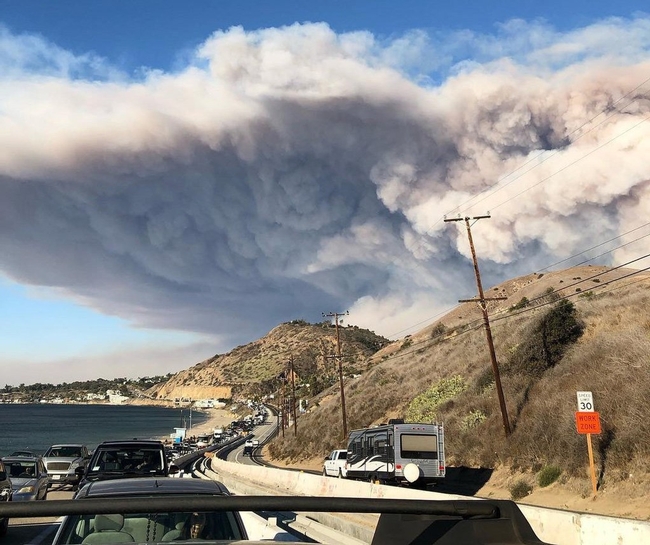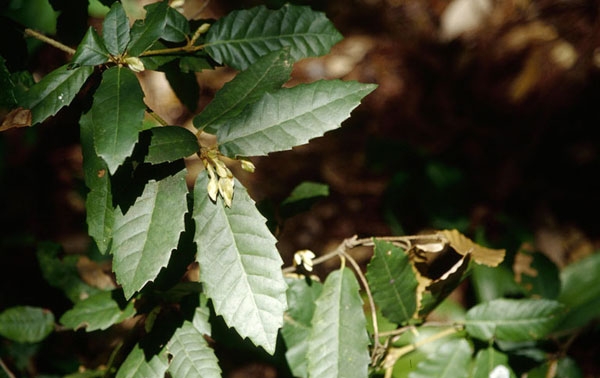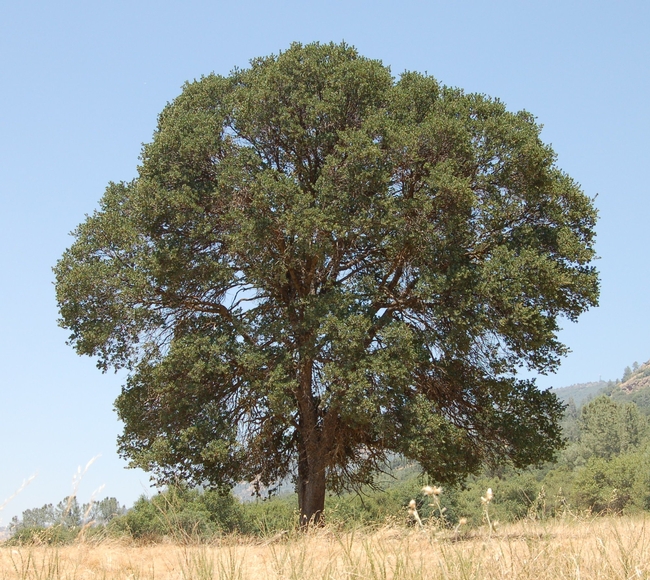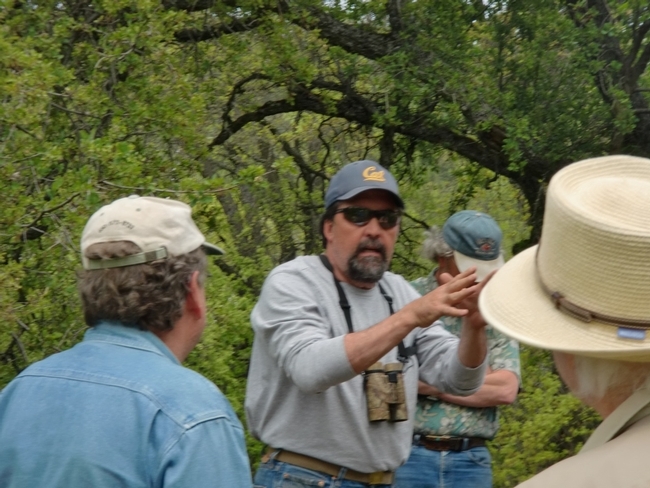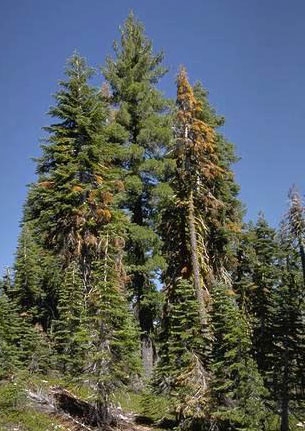Posts Tagged: Greg Giusti
UC fire scientists provide invaluable expertise to media during fire tragedies
The recent outbreak in California of two devastating fires - the Woolsey Fire in Ventura and Los Angeles counties and the Camp Fire in Butte County - are being covered extensively by the news media. UC Agriculture and Natural Resources fire scientists provide a valuable service by making themselves available to share their expertise during these tragedies. Below are a sampling of recent fire stories with comments from UC ANR sources.
Why Wildfires Are Burning So Hot And Moving So Fast
(NPR) Kirk Siegler
…One recent study predicted several million homes built in the West are at immediate risk. Susie Kocher is a forester with the University of California's Cooperative Extension service here in the Sierra.
“We haven't caught up, and to retrofit our existing housing stock to fend off embers is a long-term, expensive proposition.”
These wind-driven fires often carry air and embers that land on a roof or get sucked into a vent long after the main wall of flames has passed through. In fact, that's when most homes actually burn in wildfires.
“Even areas like Paradise that have been inhabited for 140 years as more vulnerable than they used to be. And that's not because there's new development but because there's a new climate around the old community.”
And that brings us to one of the biggest factors: climate change. Droughts are longer and more severe. The snow is melting quicker. The fire seasons are longer if not year-round.
http://www.capradio.org/news/npr/story?storyid=668163465
As wildfires grow deadlier, officials search for solutions
(Associated Press) Matthew Brown and Ellen Knickmeyer, Nov. 14
…"There are ... so many ways that can go wrong, in the warning, the modes of getting the message out, the confusion ... the traffic jams," said Max Moritz, a wildfire specialist with the University of California Cooperative Extension program.
As deadly urban wildfires become more common, officials should also consider establishing "local retreat zones, local safety zones" in communities where residents can ride out the deadly firestorms if escape seems impossible, Moritz said.
… In the mid-20th century, California ranchers burned hundreds of thousands of acres annually to manage their lands, said Lenya Quinn-Davidson, director of the Northern California Prescribed Fire Council.
That was phased out in the 1980s after California's fire management agency stepped in to take over the burns, and by the last decade, the amount of acreage being treated had dropped to less than 10,000 acres annually, Quinn-Davidson said.
Former agricultural land that rings many towns in the state became overgrown, even as housing developments pushed deeper into those rural areas. That was the situation in the Northern California town of Redding leading up to a fire that began in July and destroyed more than 1,000 homes. It was blamed for eight deaths.
"You get these growing cities pushing out - housing developments going right up into brush and wooded areas. One ignition on a bad day, and all that is threatened," Quinn-Davidson said. "These fires are tragic, and they're telling us this is urgent. We can't sit on our hands."
http://www.kulr8.com/story/39483128/fatal-california-fires-spur-search-for-solutions
Trump and Brown stir up rhetoric on wildfires but overlook pressing problems
(LA Times) Bettina Boxall, Nov. 14
… Similarly, UC Berkeley fire scientist Scott Stephens said that although climate change is playing a role in wildfire growth, he worries that a focus on global warming can leave the public thinking that “there's really nothing to be done.”
In fact, he said, “Communities could still be better prepared.”
http://www.latimes.com/local/lanow/la-me-fire-policy-trump-brown-20181114-story.html
How Does California's Wildlife Cope With Massive Wildfires?
(Atlas Obscura) Anna Kusmer, Nov. 13
While many animals are indeed displaced by wildfires, it's important to note that fire is not wholly bad for landscapes in an ecological sense. In fact, many California ecosystems rely on fire to thrive. “Fire in the human sense can often be catastrophic, but it's not necessarily the same for animals,” says Greg Giusti, a retired University of California researcher and an expert on the relationship between wildfires and wildlife. He says California wildlife have evolved to respond to fires, and can even sometimes benefit from the disruption. “It's harsh out there, but you know these animals have evolved to survive in that hostile environment.”
There are a variety to survival tactics that California wildlife will use, says Giusti. For example, birds are easily able to fly away and are usually not impacted as long as fires don't occur during the spring when they are nesting and raising their offspring.
https://www.atlasobscura.com/articles/how-does-californias-wildlife-cope-with-massive-wildfires
The Manmade Causes Of California's Endless Fire Season
(OnPoint) Meghna Chakrabarti, Nov 13
California's endless fire season. Whether it's climate change, development or forest management, we'll look at the causes — all manmade.
Guests:
Scott McLean, deputy chief, chief of information for the California Department of Forestry and Fire Protection.
Ryan Lillis, reporter for the Sacramento Bee who has covered most of Northern California's fires for last 12 years. (@Ryan_Lillis)
J. Keith Gilless, professor of forest economics at University of California, Berkeley and chair of the California Board of Forestry and Fire Protection on Cal Fire's policy board.
Glen MacDonald, professor of geography at University of California, Los Angeles who has spent decades studying climate and the effects of wildfires. He and his family were among the hundreds of thousands of people who evacuated their homes because of the Woolsey Fire. (@GlenMMacDonald1)
http://www.wbur.org/onpoint/2018/11/13/californias-endless-fire-season-climate-change
California Must Better Prepare For The Inevitability Of Future Fires (reprint of The Conversation originally published in August)
(Pacific Standard) Max Moritz, Naomi Tague & Sarah Anderson, Nov 13
Wildfire has been an integral part of California ecosystems for centuries. Now, however, nearly a third of homes in California are in wildland urban interface areas where houses intermingling with wildlands and fire is a natural phenomenon. Just as Californians must live with earthquake risk, they must live with wildfires.
https://psmag.com/environment/california-must-better-prepare-for-future-fires
Forest management debate
(KTVU) Heather Holmes, Nov. 12
In a live interview, Bill Stewart, UC Cooperative Extension specialist at UC Berkeley, said,
“It was actually on the private land that we saw better performance in terms of being able to put out the fire quicker and a lot less smoke being produced. There is a package of vegetation management and fire suppression on private lands that have proved to be more effective than what's being used on federal land.
“What we found is about half the difference comes from the private land managers do more aggressive timber harvesting and some of that profit they spend to reduce the shrubs and fuels that are on the ground because they have that cashflow. They're protecting their long-term assets. The other half is CALFIRE is much more aggressive when it comes to fire suppression in forests or shrublands.
http://www.ktvu.com/news/372545595-video
Trump's Misleading Claims About California's Fire ‘Mismanagement'
(New York Times) Kendra Pierre-Louis, Nov. 12
…Mr. Trump is suggesting that forest management played a role, but California's current wildfires aren't forest fires.
“These fires aren't even in forests,” said Max Moritz, a wildfire specialist at the University of California, Santa Barbara.
…“We have vulnerable housing stock already out there on the landscape. These are structures that were often built to building codes from earlier decades and they're not as fire resistant as they could be,” Dr. Moritz said. “This issue of where and how we built our homes has left us very exposed to home losses and fatalities like these.”
https://www.nytimes.com/2018/11/12/us/politics/fact-check-trump-california-fire-tweet.html
California's year-round wildfire threat: Why aren't communities doing more?
(SF Chronicle) Peter Fimrite and Kurtis Alexander Nov. 10,
…“To have a president come out and say it's all because of forest management is ridiculous. It completely ignores the dynamic of what's going on around us.” said LeRoy Westerling, a climate and fire scientist at UC Merced, who blamed the increasing number of fires on rising temperatures and more variable precipitation, leading to longer spells of dry weather.
…“It's like a tragic replay of last year, with strong winds in both Northern California and Southern California blowing fire,” said Max Moritz, a wildfire specialist at the Bren School at UC Santa Barbara, recalling the 2017 Wine Country fires and the Thomas Fire, which burned through Ventura and Santa Barbara counties in December.
…“We had a lot of discussion after the fires last year about the liability issue with utilities, but it's interesting to see what didn't happen,” Moritz said. “Nobody has talked about mapping neighborhoods and homes in fire-prone areas like they do in flood plain hazard zones, engineering resilience into communities, or building a little smarter.”
…Everybody agrees the situation is dire. Fire officials blame shorter winters, hotter temperatures and drier vegetation, but very little is being done to improve the situation, said Scott Stevens, a professor of fire science at UC Berkeley.
“There is an under-appreciation of fire risk in a lot of communities,” Stevens said. “It feels like we can do better at allowing local communities to access information, reduce their vulnerability and understand their vulnerability a little bit more.”
Stevens urged the creation of cooperative programs at his and other universities that would allow local government officials to collaborate with fire experts on safety planning.
California's most destructive wildfire should not have come as a surprise
(LA Times) Bettina Boxall and Paige St. John
…“We have these Santa Ana-like events happening in places that are appearing to catch people by surprise,” said Max Moritz, a cooperative extension wildfire specialist at UC Santa Barbara's Bren School. “But they shouldn't be catching people by surprise.”
“These are areas that have burned before,” he said. “And if we were to go back and do the wind mapping, we would find that at some intervals, these areas are prone to these north and northeasterly Santa Ana-like events.”
… “We have all kinds of tools to help us do this smarter, to build in a more sustainable way and to co-exist with fire,” he said. “But everybody throws up their hands and says, ‘Oh, all land-use planning is local. You can't tell people that they can't build there.' And the conversation stops right there.”
http://www.latimes.com/local/lanow/la-me-camp-fire-science-20181110-story.html
Tanoak is an 'artisanal' product with ecological value
In June, Mendocino County voters approved Measure V, which limits the practice of poisoning unwanted hardwood trees like tanoaks. The hardwood tree treatment has been used by forest land managers to make way for more valuable conifers. UC Cooperative Extension advisor Greg Giusti said tanoaks are "a difficult beast to manage," reported Sarah Reith in Willits News.
The time when tanoaks were a profitable resource ended with the advent of automobiles, reducing the need to tan leather for horse tack. An effort to harvest and use tanoaks in the late 1990s "died on the vine," Giusti said, because of market domination by hardwoods from the East.
While tanoak doesn't have commercial appeal, it can be a fine material for boutique or artisanal woodworking.
As an ecologist, Giusti noted that “tanoak plays an important role in forests,” providing habitat and high-nutrient acorns for wildlife.
"The thought of losing tanoak completely is not a positive thing,” he said
Give oaks water once a month
Even though California's majestic oak trees are generally considered drought tolerant, the last four years of well-below-average rainfall are taking a toll, reported the Sierra Sun Times.
"In some parts of the state, oaks are being deprived of water for as long as nine months, creating extreme water stress," said Greg Giusti, a forest and wildlands advisor for UC Agriculture and Natural Resources. Giusti is headquartered in the UC ANR Cooperative Extension office in Mendocino County.
Giusti and Kris Randal, the UC Master Gardener coordinator for Mariposa County, suggest that California residents with oaks on their property give the trees a good soaking once a month during the summer.
The water should be applied around the drip line - the area below the outstretched branches - but not near the trunk. A permeable soaker hose is an ideal tool for slow application over the wide area. Allow the water to run until it has soaked down to a depth of 12 to 18 inches, which can be detected with a long probe such as a screwdriver. "If it comes up with signs of moisture at the tip, you're good," the article says.
Randal said it is important to let the soil dry out completely between waterings, because oaks are susceptible to root fungus that can grow in warm, damp soil.
Even if water is unavailable and the leaves begin to turn brown or fall, the experts suggest waiting for spring before considering removing the tree.
"If you tree leafs out, it's still alive," Randall said. "And in this drought, give it extra time to leaf out."
Rocky Fire is raging through bone dry chaparral shrublands
Northern California's Rocky Fire is roaring through shrublands that have no previous recorded history of wildfires, reported Kirk Siegler on All Things Considered. It has already burned 65,000 acres and is 12 percent contained, according to CalFire's Incident Report.
The area has been protected from fire for decades, primed for the type of catastrophic blaze California officials have been predicting.
Siegler spoke to UC Agriculture and Natural Resources Cooperative Extension wildland and forestry advisor Greg Giusti.
"We've got miles and miles of contiguous chaparral vegetation and literally there are no breaks in the vegetation," Giusti said. "It's extremely steep and, in many cases, it's a roadless area."
Four years of drought has left the vegetation bone dry.
'When these fires get to an intensity we've seen, because of the fuel loading, because of fire suppression for the last 50 or 60 years, it allows the plant communities to get so dense, so thick and so expansive that, once a fire starts, it's beyond the capabilities of human control," Guisti said.
Trees dying due to drought are prone to wildfire
Across California, pine trees that have been weakened by the drought are having trouble defending themselves from bark beetles, causing widespread tree death. The dead trees won't cause fires, but when ignited they will be hotter and be more difficult to control, according to articles that ran over the weekend in the Santa Rosa Press-Democrat and the Desert Sun.
“Statewide, it's horrific,” said Greg Giusti, UC ANR Cooperative Extension advisor.
Max Moritz, UC ANR Cooperative Extension specialist in fire ecology, described the combination of exceptionally low vegetation moisture and widespread plant deaths as "a double-barreled threat."
"On top of the dry conditions, it's been unusually hot in many, many parts of the state," Moritz said. "We do have a pretty exceptional fire season stacking up, or the potential for one."
The Los Angeles Times also covered the story earlier this month.
Scott Stephens, fire science professor at UC Berkeley, said fire suppression and harvesting have made forests more dense over the last 100 years. The increased density has made trees more vulnerable as they compete for limited amounts of water, with the weaker trees more susceptible to bark beetle infestations, he said.
“If the drought continues for another two years or longer, I expect this mortality to move throughout the state,” Stephens said. “Forests that once burned frequently with low-moderate intensity fire regimes are the most susceptible.”

